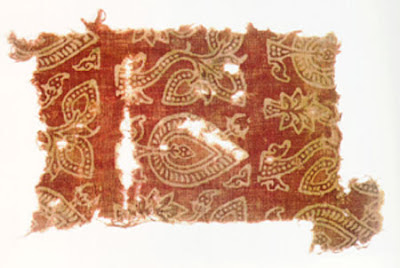(above) testing design elements, I rather liked the purple flower but it's too modern.
I've been playing with ideas for a begemmed choker a-la Cranach for a while now. I've debated making one out of femo so I can get the detail right but it'll be almost impossible to make it fit properly. I ended up using a wine-purple velvet ribbon as my backing. I then sewed brass plated accents which I've been acquiring from Spotlight for some time now. I further decorated with some pale pink pearls. The choker will eventually have a clip at the back joining the two tear drop shapes. I quite like how this has turned out even though it's not entirely like the Cranach ones.
(below) the finished choker. The gold-ish accents are flimsy enough to bend to the curve of my neck.
























